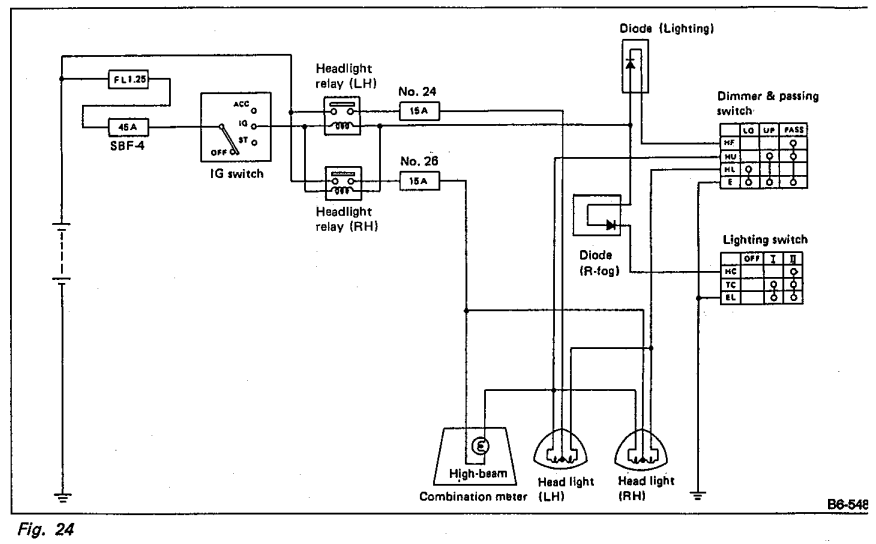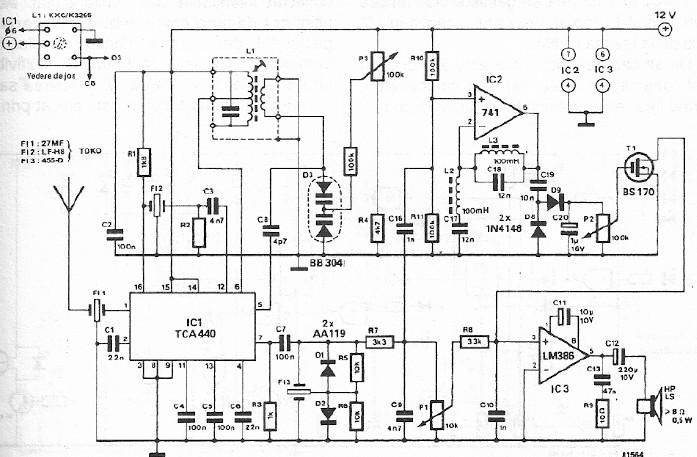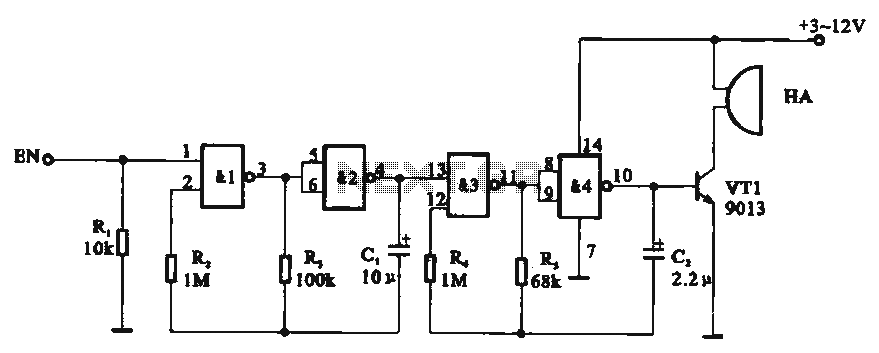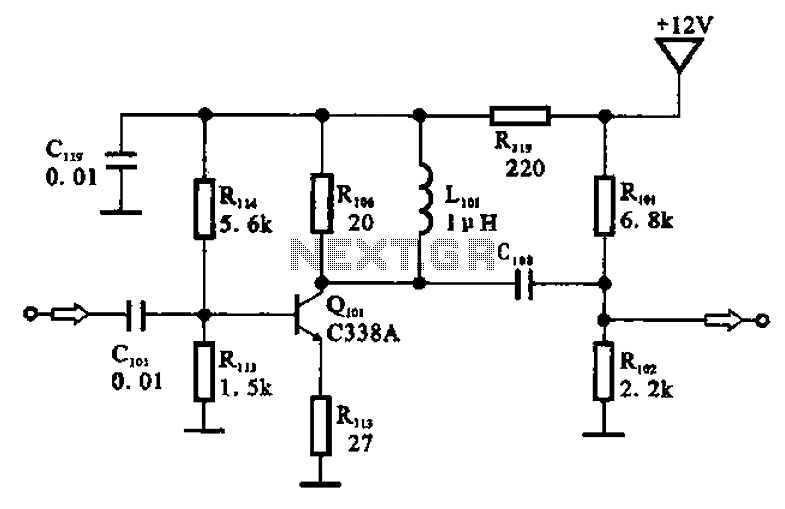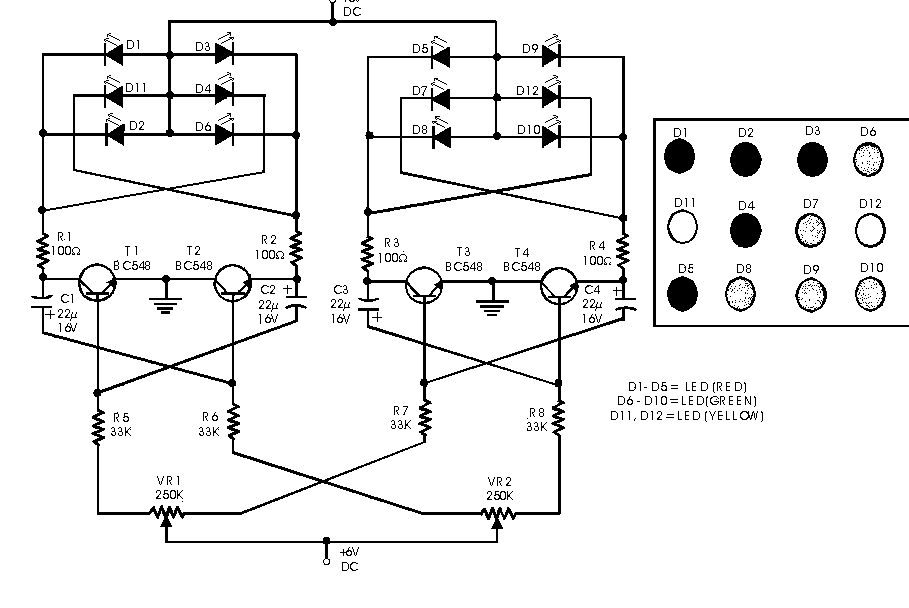
Ham Band Vfo Circuit
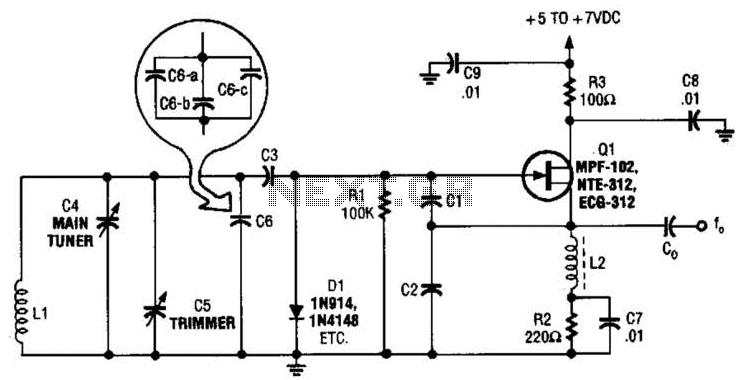
This basic VFO (Voltage Controlled Oscillator) operates within the 3 to 6 MHz frequency range and is commonly utilized in amateur radio applications, employing a Colpitts oscillator configuration. For operation at frequencies between 5 to 5.5 MHz, capacitors C2 and C are set to 70 pF, while for the 3.5 to 4.0 MHz range, a capacitor value of 1000 pF is recommended. Capacitor C3 typically ranges from 10 to 220 pF, depending on the desired frequency. Capacitors C4, C5, and C6, in conjunction with C3, play a crucial role in determining the oscillation frequency along with inductor L1. Additionally, C6 can consist of multiple smaller capacitor values connected in parallel to achieve the precise capacitance required.
The VFO circuit is implemented using a Colpitts oscillator, which is characterized by its use of a combination of capacitors and an inductor to generate oscillations. The frequency of oscillation is primarily influenced by the values of the capacitors (C2, C3, C4, C5, and C6) and the inductor (L1). In this configuration, the quality of oscillation can be enhanced by selecting appropriate capacitor values that allow for fine-tuning of the output frequency.
The choice of capacitor values is critical; for instance, using 70 pF capacitors for higher frequencies (5 to 5.5 MHz) provides a stable oscillation, while a larger capacitor (1000 pF) is necessary for lower frequencies (3.5 to 4.0 MHz) to maintain the oscillator's functionality. The variable capacitor C3, which can be adjusted between 10 to 220 pF, allows for further frequency modulation, providing flexibility in tuning the oscillator to the desired frequency.
Capacitor C6's ability to be composed of multiple smaller capacitors in parallel is advantageous for achieving precise capacitance values. This method allows for fine-tuning and can accommodate the specific requirements of the circuit, ensuring optimal performance across the specified frequency range. Proper selection and arrangement of these components will lead to a reliable and stable VFO suitable for amateur radio applications. This basic VFO for the 3- to 6-MHz range is coirimonly used in amateur applications, using a Colpitis circuit. For 5 to 5.5 MHz, C = C2 = 70 pF and for 3.5 to 4.0 MHz, use 1000 pF. C3 is typically 10 to 220 pF, depending on the frequency. C4, C5, and C6, together with C3, determine the frequency along with LI. C6 can be made up of several smaller values, paralleled to get the exact required value. 🔗 External reference
The VFO circuit is implemented using a Colpitts oscillator, which is characterized by its use of a combination of capacitors and an inductor to generate oscillations. The frequency of oscillation is primarily influenced by the values of the capacitors (C2, C3, C4, C5, and C6) and the inductor (L1). In this configuration, the quality of oscillation can be enhanced by selecting appropriate capacitor values that allow for fine-tuning of the output frequency.
The choice of capacitor values is critical; for instance, using 70 pF capacitors for higher frequencies (5 to 5.5 MHz) provides a stable oscillation, while a larger capacitor (1000 pF) is necessary for lower frequencies (3.5 to 4.0 MHz) to maintain the oscillator's functionality. The variable capacitor C3, which can be adjusted between 10 to 220 pF, allows for further frequency modulation, providing flexibility in tuning the oscillator to the desired frequency.
Capacitor C6's ability to be composed of multiple smaller capacitors in parallel is advantageous for achieving precise capacitance values. This method allows for fine-tuning and can accommodate the specific requirements of the circuit, ensuring optimal performance across the specified frequency range. Proper selection and arrangement of these components will lead to a reliable and stable VFO suitable for amateur radio applications. This basic VFO for the 3- to 6-MHz range is coirimonly used in amateur applications, using a Colpitis circuit. For 5 to 5.5 MHz, C = C2 = 70 pF and for 3.5 to 4.0 MHz, use 1000 pF. C3 is typically 10 to 220 pF, depending on the frequency. C4, C5, and C6, together with C3, determine the frequency along with LI. C6 can be made up of several smaller values, paralleled to get the exact required value. 🔗 External reference
